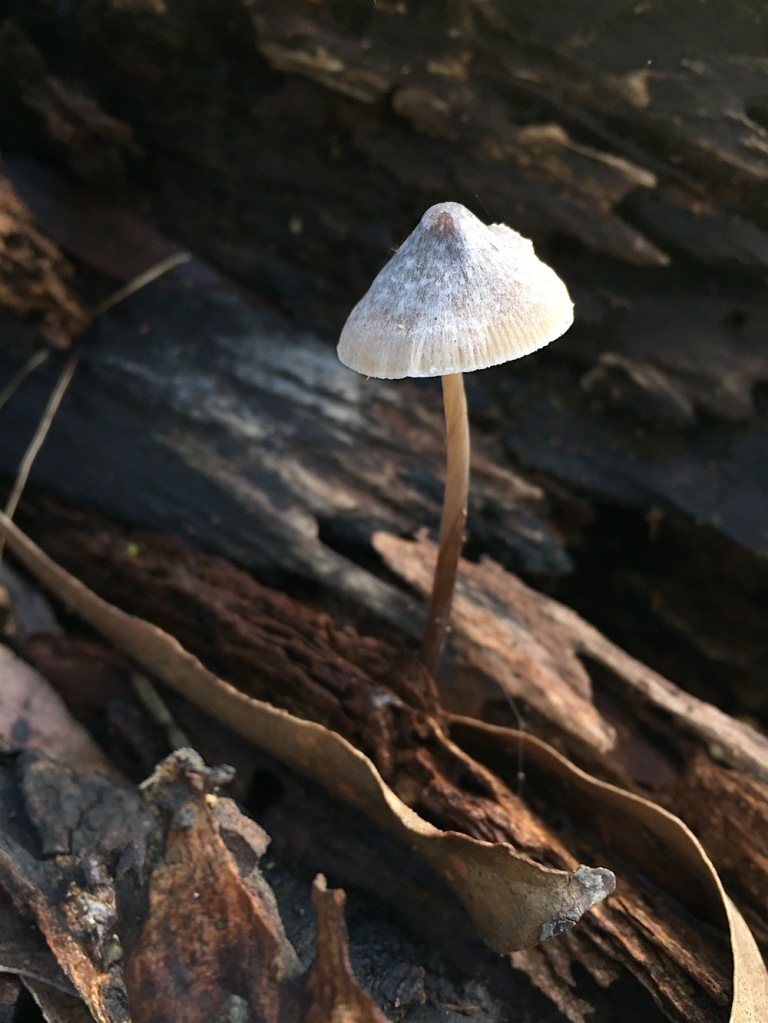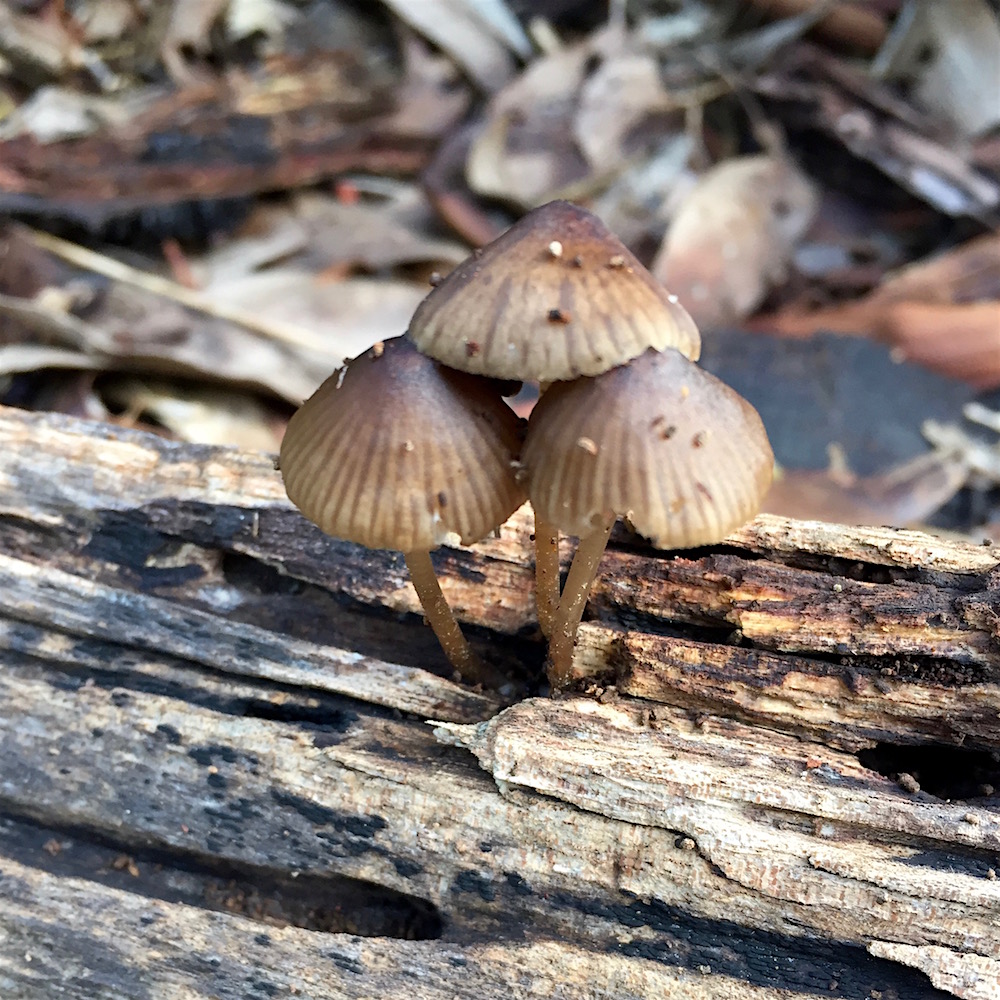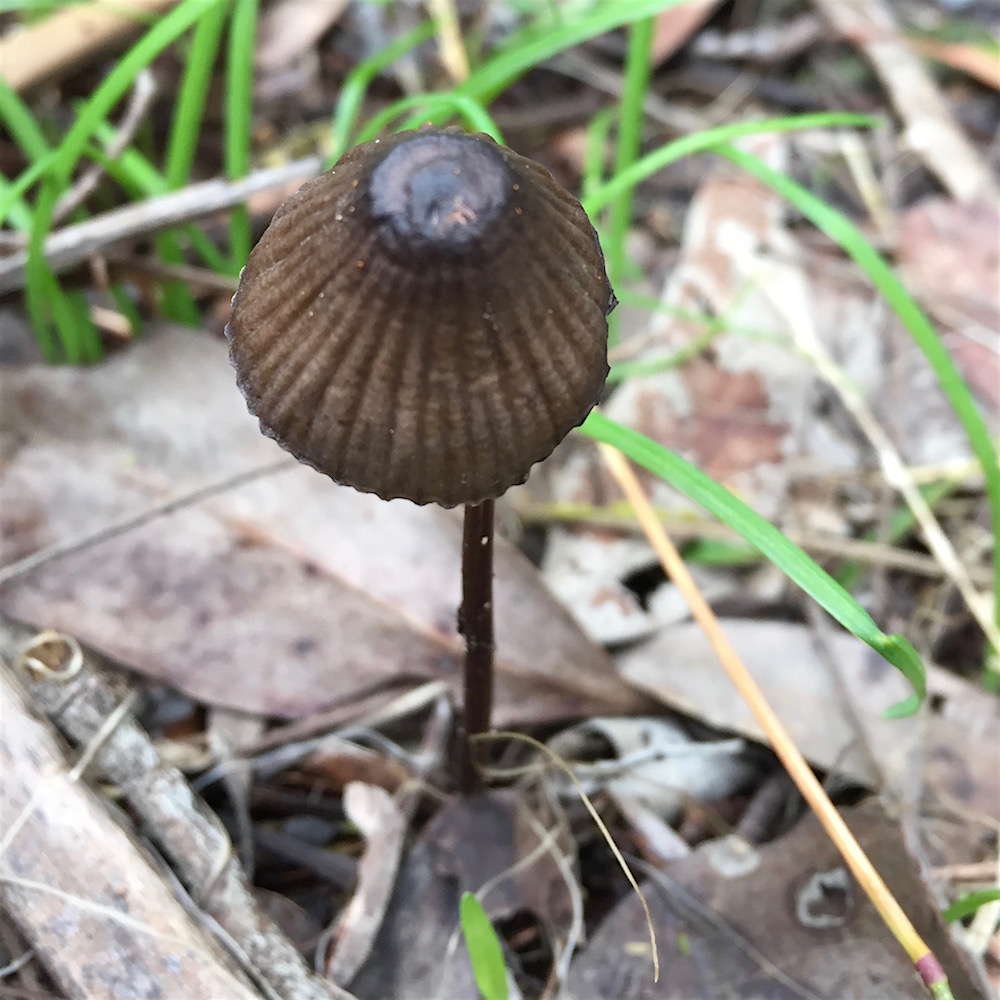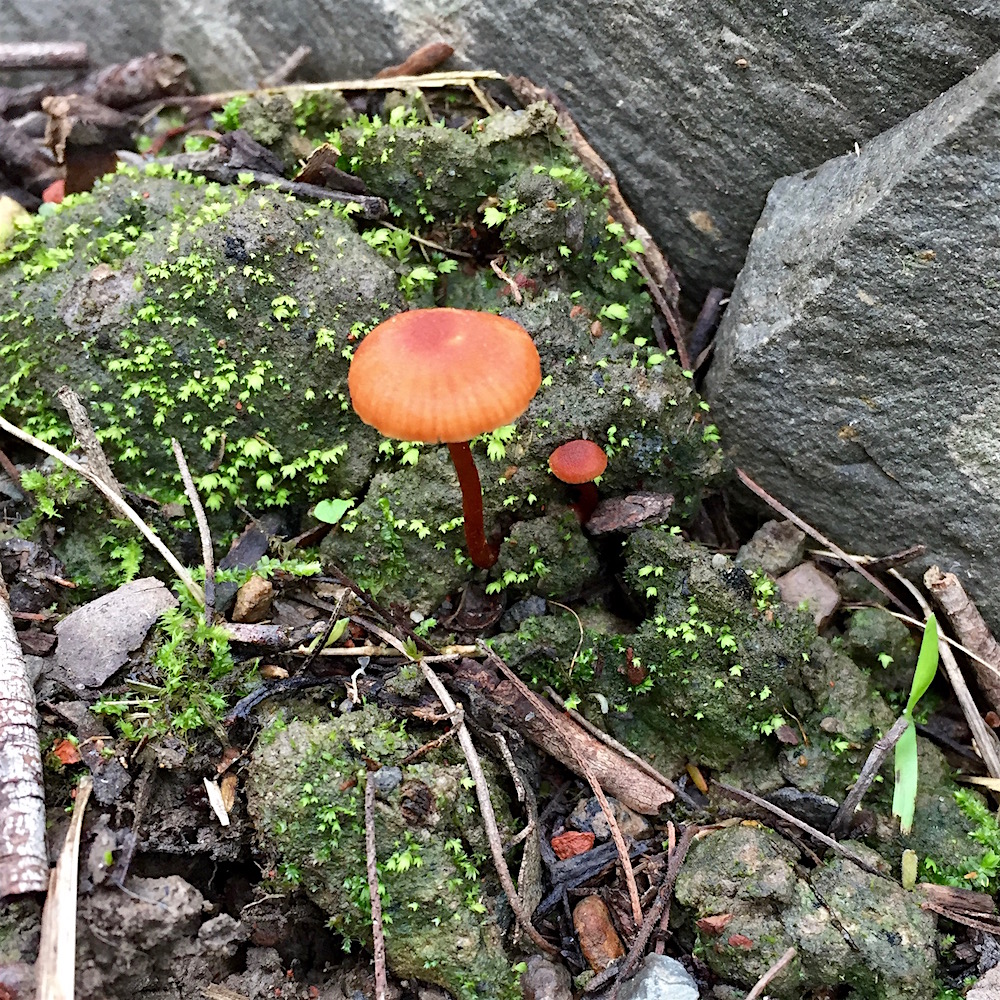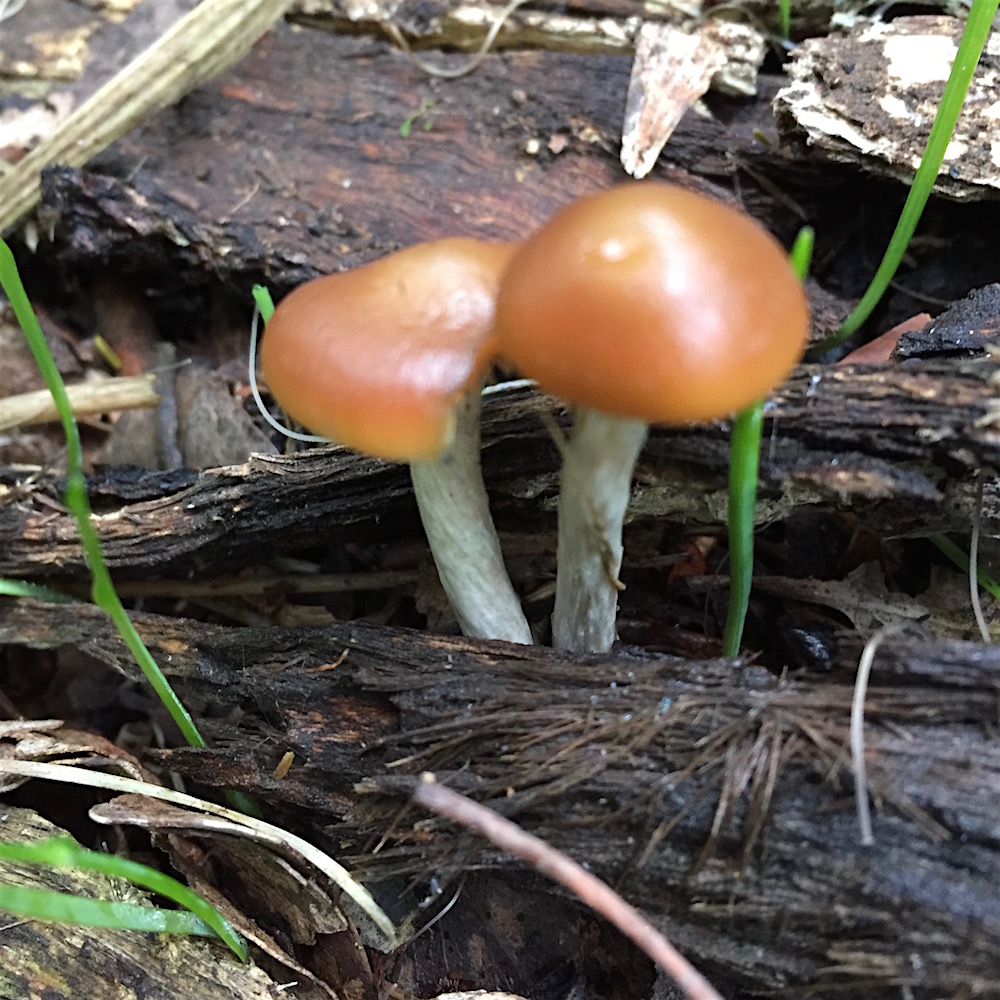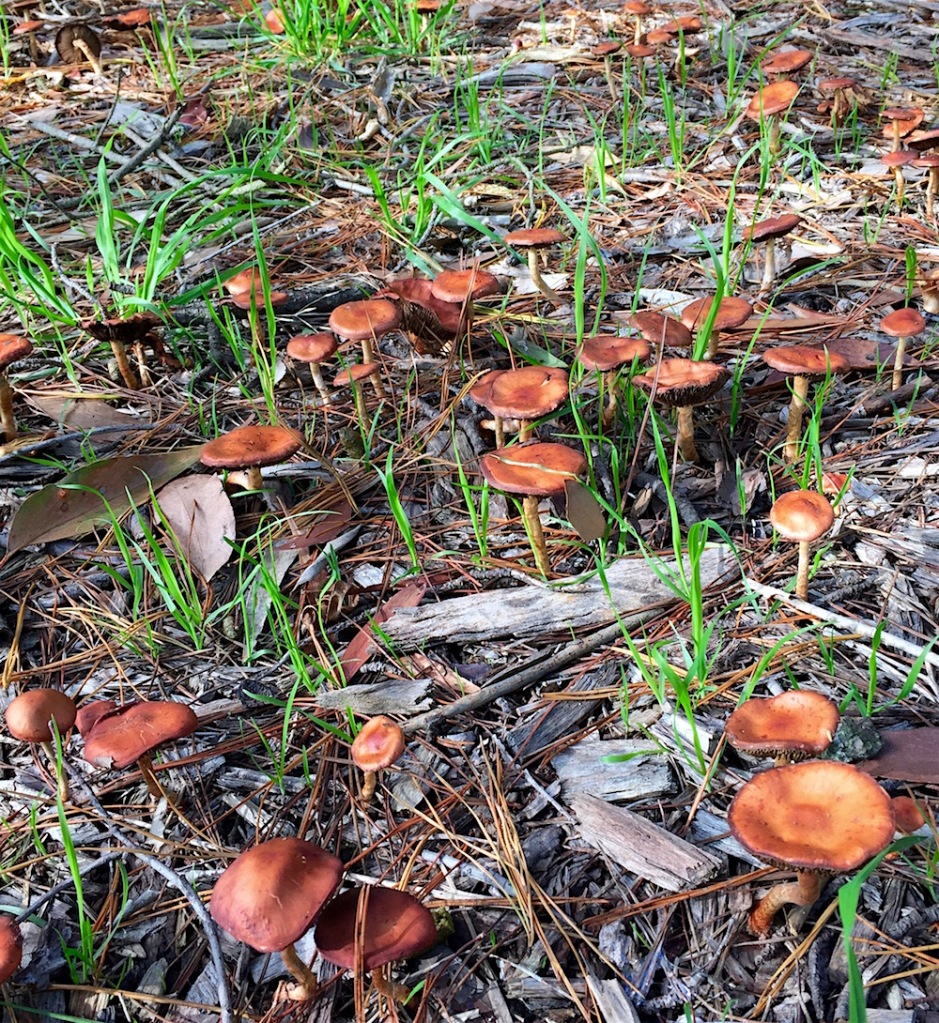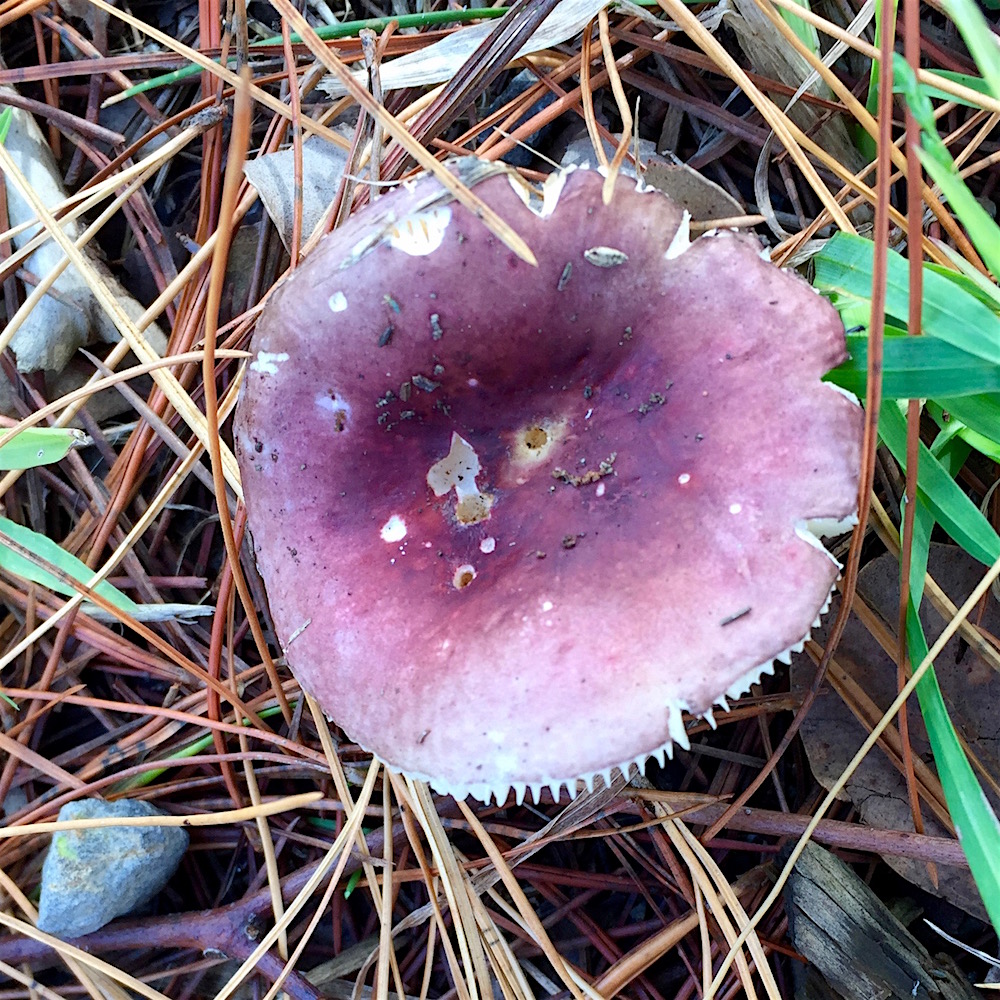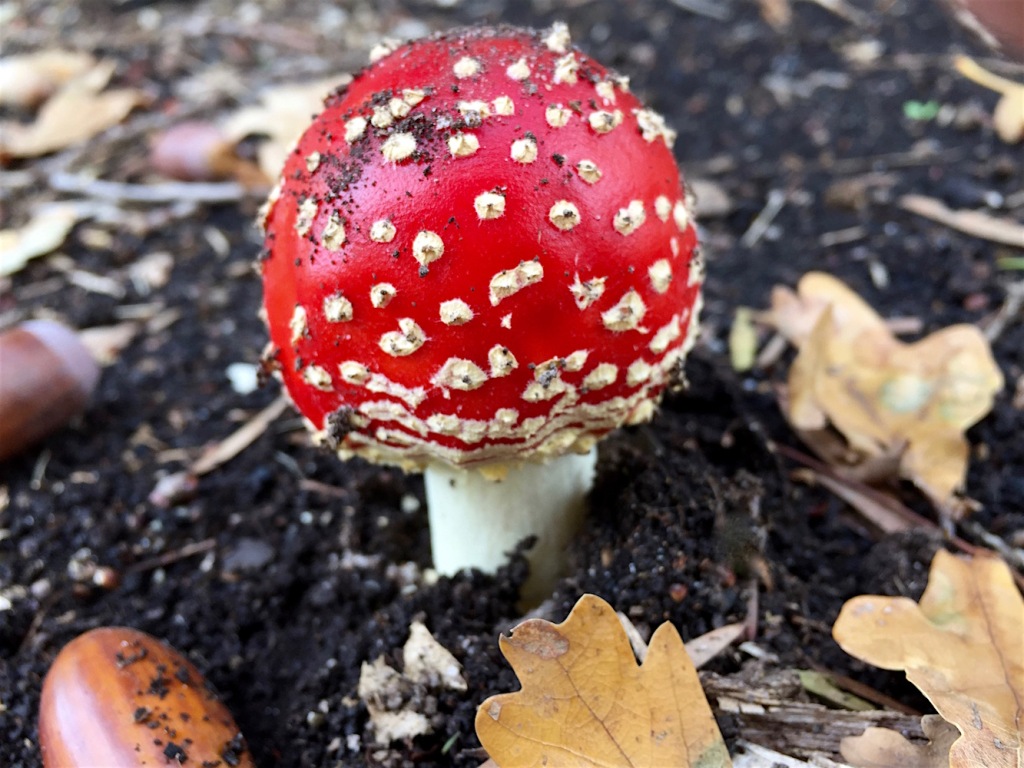Now that it is the colder and wetter part of autumn there are lots of fungi springing up all over the place. In the past week I have spotted a lot of different ones and then spent hours and hours trying to identify them. My main resource has been the excellent booklets produced by the Field Naturalists Club of Victoria, Fungi in Australia, backed up by the database at the Atlas of Living Australia.
One thing I have learned is that it is very hard to identify fungi, especially from a photo which never seems to show the one definitive identifying attribute. I am not that confident at all of my labels and so I would never eat anything I find. Please let me know if you have a better idea as to the identity of the following specimens.
First up the rather beautiful Mycena austrofilopes that got me into this whole fungi thing. The sun hit it just at the right moment and I was fascinate by its ethereal beauty.
Nearby were these Mycena clarkeana also on fallen wood near Mullum Mullum Creek.
The little creek that sometimes flows near me and eventually leads to Jumping Creek has a plenty of fungi because there are a lot of fallen trees left where they have come down.
I am pretty sure this is Mycena kuurkacea. The stipe is a lot longer than it looks in the photo, it was too damp to lie down to get a full side on photo. Notice that I have picked up the language of fungi, essential to make sense of the authoritative works I have been using.
This tiny pair were spotted when I went to photograph a bracket fungi on a log fallen across the creek. Sizing information helped identify Cruentomycena viscidocruenta.
Pholiota malicola form clusters on decaying wood, just like these two.
Back near the Mullum Mullum Creek where there has been a lot of restoration of the vegetation, a whole heap of mulch was around an old pine tree. This was confusing as I was looking for pine associated fungi but Leratiomyces ceres is a common species often found in woodchip mulch.
Today I added two colourful specimens to my small gilled fungi photo collection. I was able to identify Russula clelandii because I have now learned to pay special attention to all aspects of the fungi including the texture of the pileus and the colour and formation of the lamellae.
Finally, the one that is usually easy to spot but they have not been around much this year. Looking very European the introduced Amanita muscaria was finally found in the Oak Tree Park just down the road.
Larger gilled and bolete type fungi will be in the next post.

